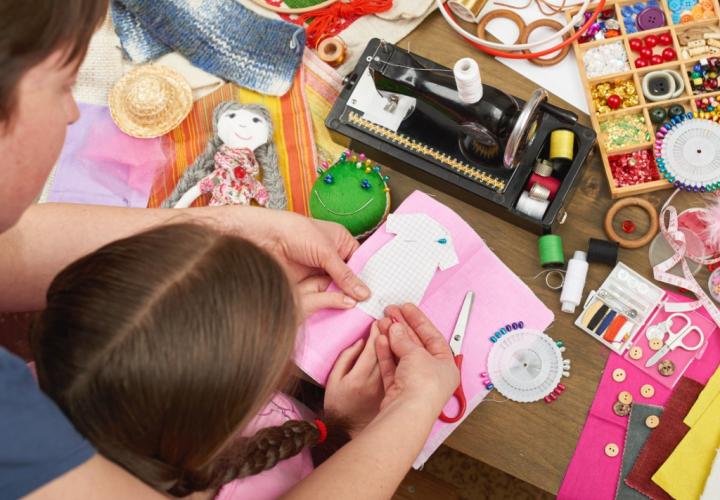This article was originally published in April of 2020. Date changed to reflect updates made in December of 2023.
Coping toolboxes use all five senses to reduce anxiety and boost positive emotions. They’re great for all ages (including parents).
Here’s how to make one.
1. Start with an actual box.
Any box will do, as long as it can hold all of the items your child selects. Shoeboxes are a popular choice.
Involve your child in selecting and decorating their box, or make it a family activity.
2. Fill the box with feel-good items that engage all five senses.
Have your child gather safe, age-appropriate items that cheer them up and help them relax. Aim for at least one for each sense.
- Sight: Kaleidoscope, hourglass, snow globe, photos of family, friends, or favorite places
- Sound: Rainstick, chimes, sea shell (to hold to their ear), written reminder to play a favorite song or playlist
- Touch: Stuffed animal, soft piece of cloth, stress ball, Rubik’s cube, fidget, silly putty
- Smell: Scented lotion, herb packet, essential oil spray, scratch-and-sniff stickers
- Taste: Mints, tea, water, chewing gum or a piece of candy (with permission, of course)
- Other ideas: A go-to book or movie for distraction; journal, sketchpad, or another way to be creative; activities like puzzles, coloring books or Sudoku
3. Include a written affirmation.
Help your child come up with an empowering statement, like “I am doing my best” or “I’ve done tough things.” Ask family members for input, and see if you can come up with a message that inspires the whole family.
Once your child decides on an affirmation – a powerful coping activity in and of itself – write it down and include in their box to hold and reflect on.
4. Write down and draw out other coping skills.
- Talk with your child about other ways they can help themselves relax, like taking deep breaths, imagining a calm place or humming a favorite song.
- Write these strategies down onto pieces of cardstock for your child to illustrate. (Besides being a fun arts-and-crafts project, this provides helpful visual cues for your child.)
- Bundle the cards together by using an elastic or punching holes and attaching them with a keyring.
5. Put the coping toolbox into practice.
Younger children in particular will need help understanding how to use their toolbox.
When your child is calm and relaxed, have them try it out. For example, have them look at a happy picture, hold a fidget for a few minutes or take a drink of water.
Talk about how these things help them take a break from feeling sad, worried or angry.
6. Make it a habit.
Store your child’s coping toolbox where it’s easy for them to reach, and set aside a few minutes each day for going through it.
Try for first thing in the morning, after finishing homework or before bed. If your child is younger, plan to be there to supervise.
Encourage your child to use their coping toolbox any time they’re feeling overwhelmed. Get tips for helping your child noticing stress here.
A coping toolbox is valuable for lots of reasons: It grounds your child in the present moment, gives them a sense of control and triggers positive, healthy thoughts. Perhaps most of all, it teaches them to make self-care a priority.
